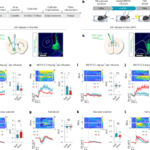2025-05-12 カリフォルニア大学バークレー校 (UCB)
<関連情報>
- https://news.berkeley.edu/2025/05/12/flamingos-create-water-tornados-to-trap-their-prey/
- https://www.pnas.org/doi/10.1073/pnas.2503495122
フラミンゴはL字型のくちばしとモーフィングする足を使って、獲物を捕獲するための渦巻きトラップを誘導する Flamingos use their L-shaped beak and morphing feet to induce vortical traps for prey capture
Victor M. Ortega-Jimenez, Tien Yee, Pankaj Rohilla, +2 , and Saad Bhamla
Proceedings of the National Academy of Sciences Published:May 12, 2025
DOI:https://doi.org/10.1073/pnas.2503495122
Significance
Flamingos employ their feet, L-shaped beak, and head movements to induce directional flow and recirculating eddies, effectively entrapping agile planktonic prey, such as brine shrimp, in muddy and hypersaline waters. This study reveals that flamingos, far from being passive filter-feeders, are active predators that use flow-induced traps to capture agile invertebrates.

Abstract
Flamingos feature one of the most sophisticated filter-feeding systems among birds, characterized by upside-down feeding, comb-like lamellae, and a piston-like tongue. However, the hydrodynamic functions of their L-shaped chattering beak, S-curved neck, and distinct behaviors such as stomping and feeding against the flow remain a mystery. Combining live flamingo experiments with live brine shrimp and passive particles, bioinspired physical models, and 3D CFD simulations, we show that flamingos generate self-induced vortical traps using their heads, beaks, and feet to capture agile planktonic prey in harsh fluid environments. When retracting their heads rapidly (~40 cm/s), flamingos generate tornado-like vortices that stir up and upwell bottom sediments and live shrimp aided by their L-shaped beak. Remarkably, they also induce directional flows (~7 cm/s) through asymmetric beak chattering underwater (~12 Hz). Their morphing feet create horizontal eddies during stomping, lifting, and concentrating sediments and brine shrimp, while trapping fast-swimming invertebrates, as confirmed by using a 3D-printed morphing foot model. During interfacial skimming, flamingos produce a vortical recirculation zone at the beak’s tip, aiding in prey capture. Experiments using a flamingo-inspired particle collection system indicate that beak chattering improves capture rates by ~7×. These findings offer design principles for bioinspired particle collection systems that may be applied to remove pollutants and harmful microorganisms from water bodies.


